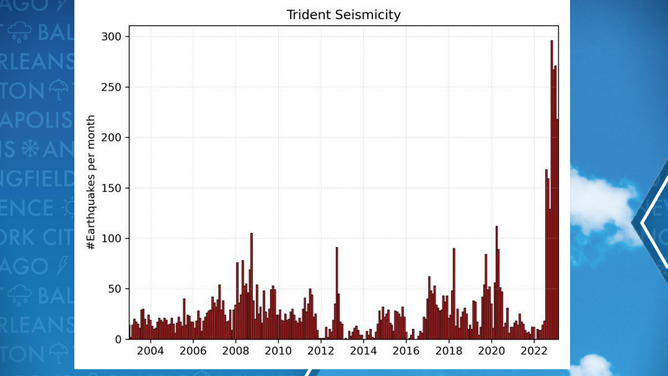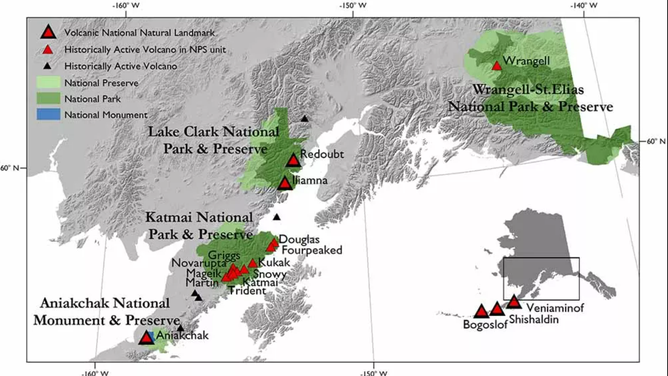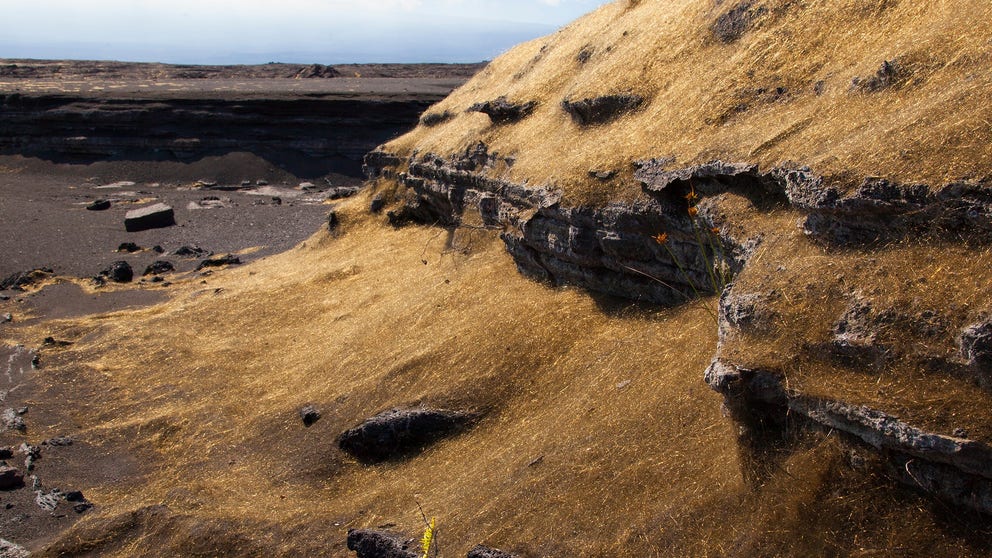Alaska officials raise alert level for volcano after increase in earthquake activity
Alaska has more than 130 volcanoes and averages one or two eruptions annually. The Aleutian Islands sit along the Ring of Fire. The U.S. Geological Survey is closely monitoring four volcanoes in Alaska.
How do volcanoes make 'Pele's Hair'?
As Hawaii's Mauna Loa volcano awakens from a decades-long slumber, officials are not only warning those in the area about ash fall and airborne gases but also the potential for volcanic glass fibers known as "Pele's Hair."
The Alaska Volcano Observatory raised the alert level Wednesday for a multi-domed volcano on the state’s peninsula and warned that the ground’s unrest may be associated with the movement of magma or fluids deep under the surface.
Trident, a stratovolcano, is located deep in the Katmai National Park about 275 miles southwest of Anchorage, Alaska, and is one of at least 14 other active volcanoes in the park.
Experts with the U.S. Geological Survey said seismic activity around Trident has seemingly been on an uptick since an earthquake swarm began in August but said there are no signs of an immediate eruption.
The volcano’s Aviation Color Code was raised to a yellow status, and the Volcano Alert Level was upped to an advisory level. Both statuses are the second-lowest levels on a four-level alert scale.
ALASKA EXPERIENCES AN EARTHQUAKE EVERY 10 MINUTES, SCIENTISTS SAY
The observatory said earthquakes were initially detected at around 15 miles below the surface, but since the swarm began, the quakes have progressively shallowed to a depth of only a couple of miles.
"Increases in seismic activity have been detected previously at Trident and other similar volcanoes, with no subsequent eruptions. We expect additional shallow seismicity and other signs of unrest, such as gas emissions, elevated surface temperatures, and surface deformation to precede any future eruption if one were to occur," the Alaska Volcano Observatory stated.

Trident Volcano Earthquake activity
(FOX Weather)
The last reported eruption of Trident lasted from 1953 until 1974, and its ash cloud was observed to reach at least 30,000 feet, a common altitude for commercial aircraft.
Experts warn ash particles can damage fuselages, windows and engine blades and can lead to the failure of critical equipment.
Volcanic eruptions in the Last Frontier are not rare, and the state is estimated to be home to more than 130 volcanoes that sit along the Pacific Ocean’s Ring of Fire. The region is home to a majority of the world’s volcanoes and earthquakes.
The U.S. Geological Survey is also closely monitoring Great Sitkin, Semisopochnoi and Takawangha, which all are under increased alert levels.
Of the four volcanoes, the Great Sitkin is the only feature that is erupting, but due to its desolate location along the Aleutian Islands, the impacts from lava and ash have been minimal.
ANTARCTICA’S ‘DOOMSDAY GLACIER’ IS MELTING AWAY DIFFERENTLY THAN SCIENTISTS FIRST THOUGH
Experts say an eruption of Trident would likely be more explosive than recent eruptions from Hawaii’s Mauna Loa and Kilauea. Still, because of its remote location, the national park would see the biggest potential impacts.
The USGS says magma with a higher silica content tends to have a greater resistance to flow, and due to trapped gasses, events can be more explosive when eruptions occur.

Map of active volcano regions of Alaska.
(US National Park Service / FOX Weather)
